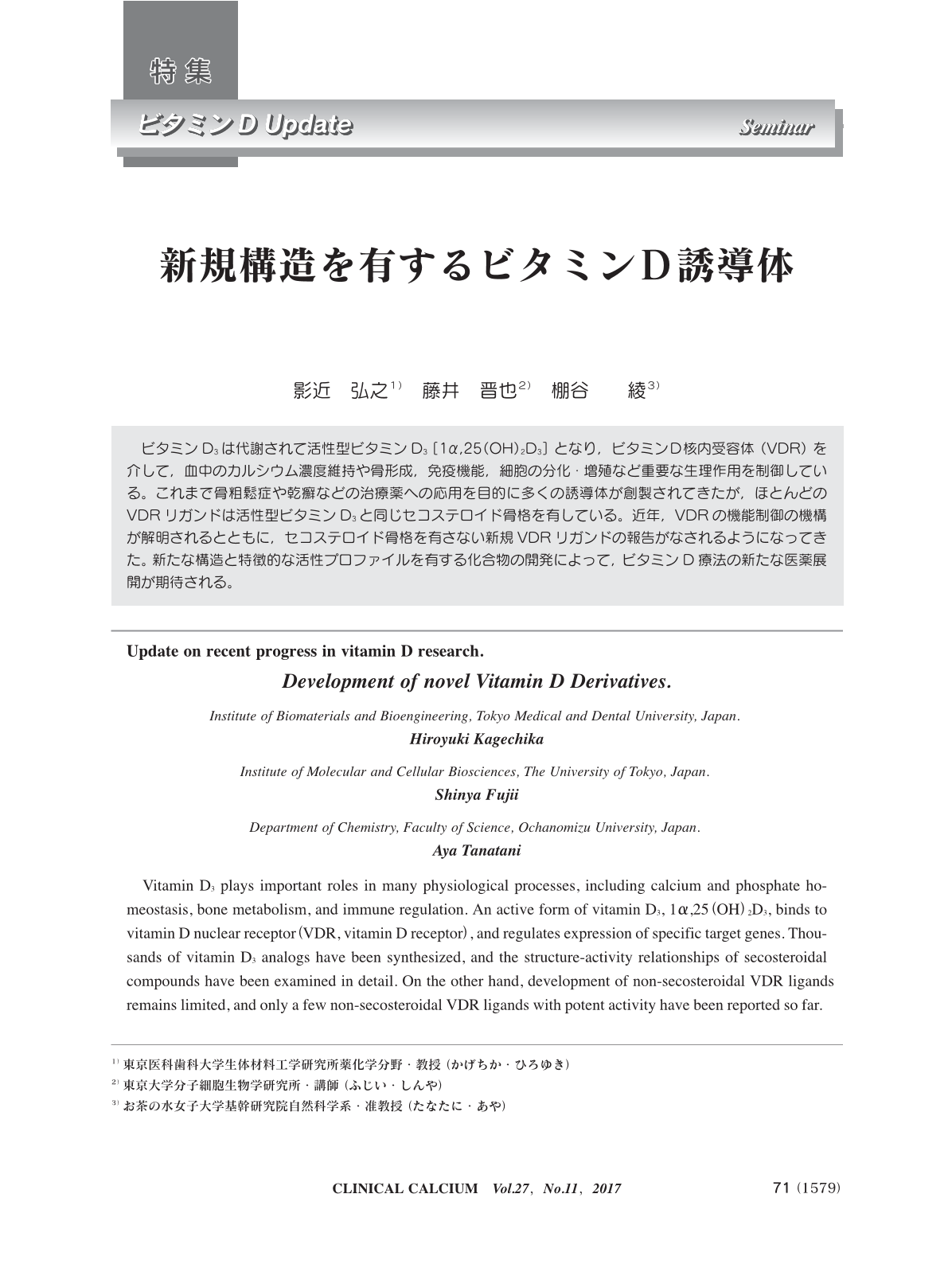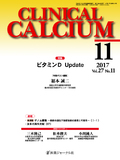Japanese
English
- 有料閲覧
- Abstract 文献概要
- 1ページ目 Look Inside
- 参考文献 Reference
ビタミンD3は代謝されて活性型ビタミンD3[1α,25(OH)2D3]となり,ビタミンD核内受容体(VDR)を介して,血中のカルシウム濃度維持や骨形成,免疫機能,細胞の分化・増殖など重要な生理作用を制御している。これまで骨粗鬆症や乾癬などの治療薬への応用を目的に多くの誘導体が創製されてきたが,ほとんどのVDRリガンドは活性型ビタミンD3と同じセコステロイド骨格を有している。近年,VDRの機能制御の機構が解明されるとともに,セコステロイド骨格を有さない新規VDRリガンドの報告がなされるようになってきた。新たな構造と特徴的な活性プロファイルを有する化合物の開発によって,ビタミンD療法の新たな医薬展開が期待される。
Vitamin D3 plays important roles in many physiological processes, including calcium and phosphate homeostasis, bone metabolism, and immune regulation. An active form of vitamin D3, 1α,25(OH)2D3, binds to vitamin D nuclear receptor(VDR, vitamin D receptor), and regulates expression of specific target genes. Thousands of vitamin D3 analogs have been synthesized, and the structure-activity relationships of secosteroidal compounds have been examined in detail. On the other hand, development of non-secosteroidal VDR ligands remains limited, and only a few non-secosteroidal VDR ligands with potent activity have been reported so far. Development of novel structures with unique biological profiles would enable the new clinical application of vitamin D function.



